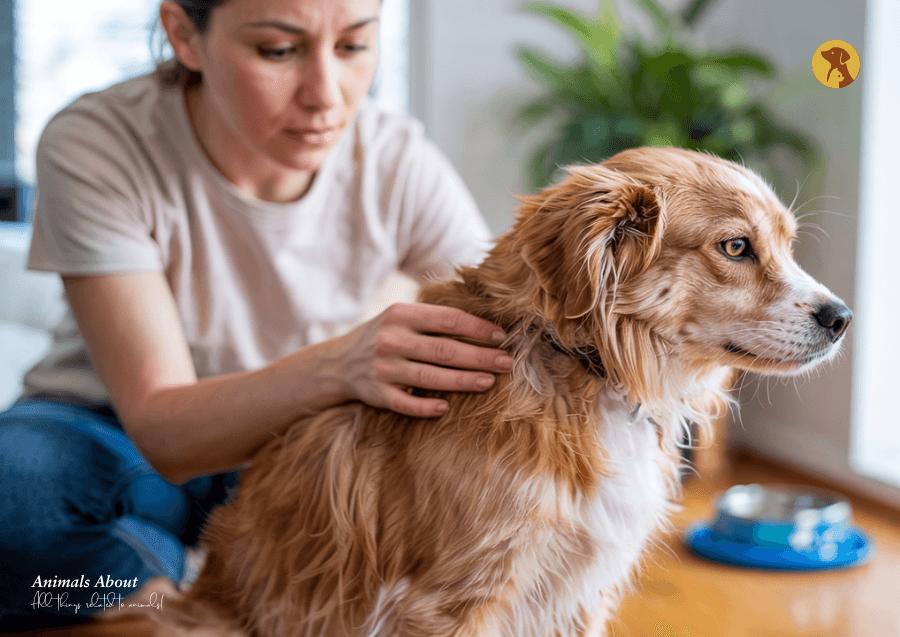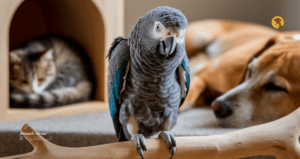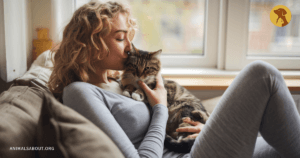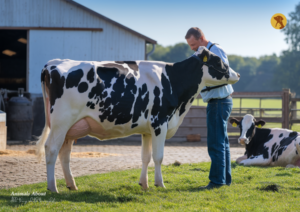As devoted pet parents, we cherish every wag, purr, and playful moment with our furry companions. Ensuring their health and happiness is a top priority, but one sneaky issue can catch even the most attentive owners off guard: dehydration. Recognizing pet dehydration signs is crucial for keeping your dog, cat, or other beloved pet in peak condition.
In this comprehensive guide, we’ll explore signs of pet dehydration, how to detect them at home, practical prevention tips, and when to seek veterinary help. Written with a human touch for animal lovers, this article is optimized for semantic search and packed with insights to help you spot symptoms of dehydration in animals early and keep your pet thriving.
Understanding Pet Dehydration Signs: Why It’s a Big Deal
Dehydration occurs when a pet loses more water than they take in, disrupting their animal hydration levels. Pets naturally lose water through everyday activities like panting, urinating, and even breathing. However, factors like hot weather, vigorous exercise, or illnesses such as vomiting and diarrhea can accelerate water loss in pets, pushing them toward dehydration. Left unchecked, this can lead to serious health complications, including organ damage or electrolyte imbalance in pets. By learning to identify pet dehydration signs, you can act swiftly to protect your furry friend.
For animal lovers, understanding pet health symptoms is like learning to speak your pet’s silent language. Dehydration is a common but preventable issue, and catching it early through detecting dehydration in pets can make all the difference. Let’s dive into the key symptoms of dehydration in animals and how to spot them with ease.
The Top Pet Dehydration Signs to Watch For
Dehydration can manifest in several ways, but the good news is that many pet dehydration signs are easy to spot at home. Here’s a detailed breakdown of the most common symptoms, along with tips for checking them.
1. Dry Gums and Sticky Mouth
A healthy pet’s gums are moist and slick, much like a well-hydrated human’s lips. If you gently touch your pet’s gums and they feel dry or sticky, it’s a major red flag for detecting dehydration in pets. To check, lift your pet’s lip and press lightly on their gums. In a hydrated pet, the pressed area will turn white briefly but return to pink within a second. If the color lingers or the gums stay dry, it’s time to investigate further. Dry gums are one of the earliest pet fluid intake warning signs, so don’t ignore them.
2. Sunken Eyes
Have you ever noticed your pet’s eyes looking dull, tired, or slightly recessed? Sunken eyes are a classic indicator of dehydration in animals. This happens because the body, desperate to conserve fluid, pulls water from non-essential tissues like those around the eyes. For animal lovers, this subtle change can be heartbreaking to see, but catching it early can prevent further water loss in pets.
3. Lethargy in Pets
Is your normally energetic dog or curious cat suddenly acting sluggish or uninterested in their favorite activities? Lethargy in pets is a common pet health symptom tied to dehydration. When animal hydration levels drop, the body conserves energy, making your pet seem tired or withdrawn. If your furry friend skips their usual zoomies or avoids playtime, check for other signs of pet dehydration.
4. Loss of Skin Turgor (Skin Elasticity Test)
One of the most reliable ways to check for pet dehydration signs is the skin elasticity test, also known as the skin turgor test. Gently pinch the skin on your pet’s back or between their shoulder blades. In a well-hydrated pet, the skin springs back immediately. If it stays tented or returns slowly, this loss of skin turgor signals dehydration. This simple home dehydration test for pets is a must-know for every pet owner and can help you catch pet fluid intake warning signs early.
5. Excessive Panting or Decreased Appetite
Pets often pant to cool off, but excessive panting—especially without obvious triggers like heat or exercise—can point to symptoms of dehydration in animals. Similarly, a sudden decreased appetite is a warning sign. Dehydration can make pets feel unwell, reducing their interest in food. These pet health symptoms are easy to notice for attentive owners, so keep an eye out.
6. Vomiting and Diarrhea
If your pet is experiencing vomiting and diarrhea, they’re losing fluids at an alarming rate. These conditions are among the most dangerous pet dehydration signs because they can quickly lead to severe water loss in pets and electrolyte imbalance in pets. If these symptoms persist, a veterinary dehydration check is essential to stabilize your pet and address underlying causes.
7. Increased Heart Rate or Weak Pulse
In more advanced cases, dehydration can cause a rapid heartbeat or a weak pulse as the body struggles to circulate blood with reduced fluid. While this is harder to check at home, animal lovers with some experience can feel their pet’s pulse (on the inner thigh for dogs or cats) to monitor for irregularities. This is a serious pet health symptom that warrants immediate veterinary attention.
8. Reduced Urination
If your pet is urinating less frequently or producing dark, concentrated urine, it’s a sign their body is conserving water due to dehydration. Monitoring litter box habits or outdoor bathroom breaks can help you spot this pet fluid intake warning sign. Healthy animal hydration levels produce regular, light-colored urine, so changes here are worth noting.
How to Perform a Home Dehydration Test for Pets
You don’t need a veterinary degree to check for pet dehydration signs. A home dehydration test for pets is simple and can be done in minutes. Here’s how:
- Gum check: Touch your pet’s gums. Are they dry or sticky? Does the color return slowly after pressing?
- Skin turgor test: Pinch the skin on their back. Does it snap back or show loss of skin turgor?
- Behavior observation: Is your pet showing lethargy in pets, decreased appetite, or excessive panting?
- Eye check: Do their eyes appear sunken or dull?
- Urine monitoring: Is urination less frequent or darker than usual?
If you notice two or more of these symptoms of dehydration in animals, take action immediately. These tests are invaluable for detecting dehydration in pets and can help you decide whether to try home remedies or seek a veterinary dehydration check.
What Causes Pet Dehydration?
Understanding the causes of water loss in pets can help you prevent dehydration before it starts. Common culprits include:
- Hot weather: High temperatures increase panting and fluid loss, especially in active pets.
- Exercise: Vigorous play without enough water breaks can deplete animal hydration levels.
- Illnesses: Conditions like vomiting and diarrhea, kidney disease, or diabetes can cause rapid fluid loss.
- Inadequate water intake: Some pets, especially cats, are picky drinkers, leading to chronic low pet fluid intake warning signs.
- Stress or travel: Changes in routine can make pets skip water or food, increasing dehydration risk.
- Medications: Certain drugs, like diuretics, can increase urination and water loss in pets.
By recognizing these triggers, animal lovers can take proactive steps to maintain healthy animal hydration levels and avoid pet dehydration signs.
Preventing Pet Dehydration: Practical Hydration Tips for Pets
The best way to handle dehydration is to prevent it altogether. Here are actionable hydration tips for pets to keep your furry friend’s animal hydration levels in check:
- Provide constant fresh water: Ensure your pet has access to clean, fresh water at all times. Wash and refill bowls daily to encourage drinking.
- Incorporate wet food: Wet food is a great way to boost fluid intake, especially for cats who often have low thirst drives. It’s a sneaky way to combat pet fluid intake warning signs.
- Use pet water fountains: Many pets are drawn to running water. A pet fountain can make drinking more appealing and help prevent symptoms of dehydration in animals.
- Monitor weather conditions: On hot days, limit outdoor time, provide shade, and offer extra water to counter water loss in pets. Frozen treats like ice cubes or pet-safe broth popsicles can also help.
- Offer small, frequent drinks: If your pet is recovering from vomiting and diarrhea, give small amounts of water every 15–30 minutes to avoid overwhelming their stomach.
- Add flavor to water: A splash of low-sodium chicken broth (check for pet-safe ingredients) can entice picky drinkers.
- Regularly check water intake: Keep an eye on how much your pet drinks daily. Sudden changes can signal pet health symptoms that need attention.
- Travel prep: When traveling, bring familiar water bowls and offer water breaks to reduce stress-related pet fluid intake warning signs.
These hydration tips for pets are easy to implement and go a long way toward preventing pet dehydration. For animal lovers, these small habits can become second nature, ensuring your pet stays healthy and hydrated.
When to Seek a Veterinary Dehydration Check
While mild dehydration can often be managed at home, certain pet dehydration signs demand professional attention. Contact your vet immediately if you notice:
- Persistent vomiting and diarrhea, which can cause rapid water loss in pets.
- Severe lethargy in pets or unresponsiveness.
- Sunken eyes or extreme loss of skin turgor.
- Dark, scant urine or no urination for 12+ hours.
- Signs of electrolyte imbalance in pets, like muscle tremors or confusion.
A veterinary dehydration check may involve blood tests, fluid therapy, or diagnostics to identify underlying causes like infections, kidney issues, or diabetes. Vets can administer subcutaneous or intravenous fluids to quickly restore animal hydration levels and correct electrolyte imbalance in pets. For animal lovers, knowing when to see a vet is critical to ensuring your pet gets timely care.
Special Considerations for Different Pets (Pet Dehydration Signs)0
Not all pets show pet dehydration signs the same way, and their needs vary by species, age, and health status. Here’s a quick guide for animal lovers with different types of pets:
Dogs
Dogs are active and prone to excessive panting, especially in hot weather. Breeds with thick coats or short noses (like bulldogs) are at higher risk for water loss in pets. Watch for dry gums, lethargy in pets, and decreased appetite, and ensure they have constant water access during playtime.
Cats
Cats are notorious for low water intake, making them susceptible to chronic dehydration. Kidney issues, common in older cats, can worsen pet fluid intake warning signs. Look for sunken eyes, loss of skin turgor, and reduced litter box activity. Wet food and water fountains are great for preventing pet dehydration in felines.
Senior Pets
Older pets may have weaker thirst drives or underlying conditions like diabetes, increasing dehydration risk. Monitor for lethargy in pets, decreased appetite, and slow skin turgor. Regular vet checkups can catch pet health symptoms early.
Puppies and Kittens
Young pets are more vulnerable to vomiting and diarrhea, which can lead to rapid water loss in pets. Their small size means dehydration sets in faster, so watch closely for pet dehydration signs and seek a veterinary dehydration check if symptoms appear.
Small Animals (Rabbits, Guinea Pigs, etc.)
Small pets like rabbits or guinea pigs may show decreased appetite or reduced droppings as symptoms of dehydration in animals. Ensure they have fresh water via bottles or bowls, and check for dry gums or lethargy in pets.
By tailoring your approach to your pet’s unique needs, you can better spot pet dehydration signs and keep their animal hydration levels balanced.
Myths About Pet Dehydration
As animal lovers, we often hear myths that can cloud our understanding of pet health symptoms. Let’s debunk a few common misconceptions about pet dehydration signs:
- Myth: Pets only get dehydrated in summer.
Truth: Dehydration can happen year-round due to illness, stress, or low water intake. Indoor pets are just as at risk for water loss in pets. - Myth: If my pet is eating, they’re not dehydrated.
Truth: Decreased appetite often comes later in dehydration, so eating doesn’t rule out pet fluid intake warning signs. - Myth: Only dogs need lots of water.
Truth: Cats, small animals, and even birds need proper animal hydration levels to stay healthy.
Clearing up these myths helps animal lovers focus on real pet dehydration signs and take action when needed.
The Emotional Side of Pet Dehydration Signs
For animal lovers, seeing a pet struggle with lethargy in pets, sunken eyes, or other pet dehydration signs can be deeply unsettling. Our pets are family, and their discomfort tugs at our hearts. By learning to spot symptoms of dehydration in animals and acting quickly, you’re not just protecting their health—you’re preserving the joy and connection you share. Every slobbery kiss or gentle purr is worth the effort of preventing pet dehydration.
Wrapping Up: Be Your Pet’s Hydration Hero
Dehydration may be a sneaky foe, but with the right knowledge, you can spot pet dehydration signs like a pro and keep your furry friend thriving. From dry gums and sunken eyes to loss of skin turgor and lethargy in pets, these pet health symptoms are your pet’s way of saying, “I need help.” Use the home dehydration test for pets to check their status, follow our hydration tips for pets to prevent issues, and know when to see a vet for a veterinary dehydration check. By staying vigilant, you’re ensuring your pet’s animal hydration levels stay balanced, keeping them playful, cuddly, and full of life.
Animal lovers, let’s keep the conversation going! Have you ever spotted pet dehydration signs in your furry friend? Share your stories or hydration tips for pets in the comments. Together, we can help every pet stay healthy and hydrated.







